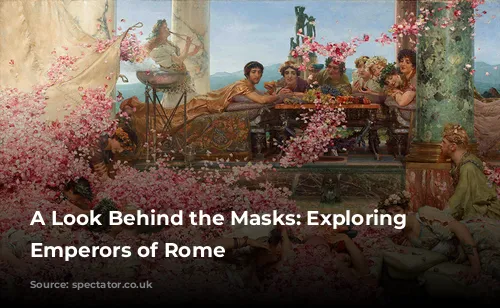Emperor of Rome? The title seems a little off, doesn’t it? Is there a typo? Not at all! Mary Beard’s new book explores the reigns of 30 Roman emperors, from Julius Caesar to Alexander Severus, all within the span of three centuries.
So, why the singular? The answer lies in the nature of Roman autocracy. As Marcus Aurelius, one of the Roman emperors, himself put it, “Same play, different cast.” It wasn’t the individual rulers, but the symbol of power, the Emperor of Rome, that truly mattered to the millions of citizens under Roman rule.
The Emperor: A Blurred Image
For the vast majority of the population, the Emperor was a distant figure, an unknown entity simply known as “the Emperor of Rome.” Even the elite, outside the bustling heart of the capital, struggled to attach a face or name to the man who held ultimate power. This wasn’t a matter of indifference; the Roman government actively cultivated this blurring of identity.
Every time an emperor died, his marble portrait was meticulously reworked to resemble his successor. This was a deliberate act, designed to suggest continuity, to emphasize that power remained uninterrupted, even as rulers changed. Every imperial head was given the same number of locks of hair, regardless of reality. And even the ancient historians, who chronicled the emperors’ lives, often presented them as indistinguishable figures, repeating the same stories with different names.
This deliberate construction of collective anonymity created an aura of stability that, as Beard puts it, made the world seem unchanging, even across generations. You could have fallen asleep in 1 BCE and woken up in 200 CE, and the world around you would still feel familiar.
Behind the Masks: The Emperors’ Reality
But beneath the carefully crafted image of immortality lay the reality of human emperors, flawed and fallible, striving to maintain power in a complex and often treacherous world. Beard’s book dives into this unseen reality, challenging the traditional view of emperors as inherently good or bad, like Trajan or Nero.
Instead, she asks probing questions: how did these emperors actually rule a vast empire with a limited staff? Why were so many of them assassinated? What were the rules of succession, if any? She explores the facts, but also the fictions that surrounded the emperor, the rumors, gossip, and urban myths that shaped public perception. These “alternative facts” and the power of imagination were crucial to understanding how the Roman populace conceptualized absolute, unending power.
A Glimpse into Imperial Life
The book also offers a fascinating glimpse into the everyday lives of these powerful rulers. We see their palaces evolve, from a humble compound of houses to the opulent Golden House of Nero, with its lake that was said to be as large as the sea. We witness the banquet halls, where myths and legends were born, like the infamous dinner parties hosted by Elagabalus, filled with outlandish tricks and pranks, some likely exaggerated by his rivals.
These stories, while often embellished, provide valuable insight into the complex interplay of power, politics, and perception within the Roman empire.
Emperor of Rome: A Powerful and Engaging Journey
Emperor of Rome is much more than a history book; it’s a thought-provoking exploration of power, perception, and the human condition, a reminder that even the most powerful figures are subject to the same flaws and desires as anyone else. It’s a book that challenges assumptions, reframes our understanding, and leaves us with a new appreciation for the complexity and intrigue of the Roman emperors and the world they ruled.
By delving into the fabrications, rumors, and legends that surrounded the emperors, Beard invites us to see beyond the masks of power and discover the humanity beneath. This engaging and thought-provoking book is a must-read for anyone interested in Roman history, power dynamics, and the enduring nature of human curiosity.

